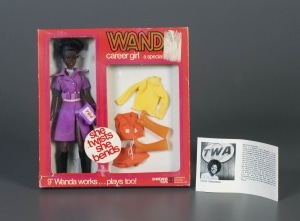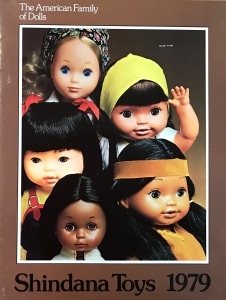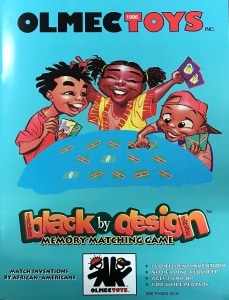On my first visit to The Strong National Museum of Play in February 2016, I came as a Strong Research Fellow. Then, I was on a search for any information about Mattel and its history with Black Barbie dolls. I wondered how and why Mattel created Black Barbies, who was involved in their production, and how those designs were then marketed in ads and magazines. Fantastically, I came across the story of the Shindana Toy Company and was able to locate some materials at The Strong that would help me complete my dissertation and graduate from Purdue University with my PhD the following spring. However, I knew there was much more to be known about Shindana Toy Company, Mattel, and the Black dolls that were celebrated by the few doll collectors and friends I talked to about my research.
Now as a professor of Women’s Studies and a much more established researcher, I returned to The Strong with a renewed commitment to piecing together stories about Black dolls, their designers, and Mattel’s history with dolls. On this trip, I was pleasantly surprised that The Strong had acquired more Barbies, such as Soul Train Nichelle (of the Shani doll line, released in 1993), as well as some of Shindana’s dolls such as Wanda Career Girl (featured as a ballerina, a surgeon, and a stewardess in 1978). Additionally, I spent some time with the robust Playthings trade magazine collection held at The Strong and learned about other manufacturers, like REMCO, Olmec, and Fisher-Price, that also produced Black dolls as a response to the call for more diversity in doll play in the 70s, 80s, and 90s. This rise in Black (as well as “Hispanic” and “Asian”) dolls during this time reflected similar changes happening not just in doll manufacturing and child play, but in many industries.
One organization I had not planned to find was the Barbie Liberation Organization. BLO’s file indicated how some feminists were organizing against Barbie’s prevalence in the market. Apparently, women bought, repackaged, and “reverse shoplifted” Barbies and GI Joes and switched their voice boxes. With “surgery,” the Barbie dolls became the (now) stereotypical femme fatale shouting things about vengeance and violence, while the GI Joes celebrated hugs and parties and singing. They even had hotlines for folks to call once they purchased these re-engineered dolls. While it’s not clear how successful the organization was, the Barbie Liberation Organization highlights the ways that consumers were actively shaping the type of products that Mattel, and others, created.
Along with uncovering the Mattel history of Black Barbies, the Barbie Liberation Organization, and the wonderful materials I found on other Black dolls in the industry—including the 2009 Vogue Italia issue that featured Black Barbies for their Black issue—my most recent trip to The Strong proved to be above and beyond what I had planned. As before, I am inspired anew to complete the work I have done on Black Barbies and highlight the many histories that have yet to be revealed. Thanks in part to my research at The Strong, my book, tentatively titled Beyond Barbie: Nicki Minaj, Disney, and Black Women’s Cultural Production, will be available in 2022.
 Hours 10 a.m.–5 p.m. | Fri. & Sat. till 8 p.m.
Hours 10 a.m.–5 p.m. | Fri. & Sat. till 8 p.m.


